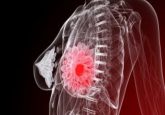Drug repurposing and oncology – pitfalls and potentials

Drug repurposing, also known as drug repositioning, is a strategy that seeks to re-use existing, licensed medications for new indications. Repurposing is not a new approach, and medicine is replete with many well-known examples of drugs being licensed for illnesses very different from those they were originally developed to treat.
Perhaps the best known example is sildenafil (Viagra), famously developed for angina and then successfully repurposed as a treatment for erectile dysfunction and then again as a treatment for pulmonary hypertension.
In the case of oncology, there are examples of chemotherapy drugs being repurposed for non-oncological diseases, for example methotrexate or cyclophosphamide re-used for rheumatoid arthritis. Examples of non-oncological drugs repurposed to treat cancers are far fewer in number, most notable being thalidomide as a treatment for multiple myeloma and all-trans retinoic acid for acute promyelocytic leukemia (APL).
However, there is a growing level of interest in repurposing noncancer drugs for use in oncology [1]. The advantages of repurposing are intuitively obvious – we have the benefit of well-characterized, widely prescribed and often very cheap drugs. This means that there is a wealth of data regarding pharmacokinetics, pharmacodynamics, safety, mechanisms of action and so on.
“The advantages of repurposing are intuitively obvious – we have the benefit of well-characterized, widely prescribed and often very cheap drugs.”
In some cases we also have extensive epidemiological data that may indicate that the drug has some impact on cancer incidence or outcomes. Good examples include aspirin, metformin and statins – all drugs that are used daily by millions of patients and are now subject to intense scrutiny for their potential anticancer effects.
While aspirin or metformin are now the focus of numerous clinical trials, for example the large Phase III Add-Aspirin trial [2], the list of noncancer drugs with some evidence of anticancer activity is growing. The Repurposing Drugs in Oncology (ReDO) project, a research collaboration between two not-for-profit organisations, currently has a list of more than 130 drugs that show some level of preclinical or clinical evidence [3].
Many of these drugs are at a relatively early stage of investigation, with data coming primarily from in vitro or in silico sources, but there are others with in vivo and human data available. To date, the ReDO project has published review papers on seven drugs that it has classified as ‘high-potential’ leads: mebendazole (an anti-helminthic), cimetidine (antacid), itraconazole (anti-fungal), clarithromycin (antibiotic), nitroglycerin (vasodilator), diclofenac (NSAID) and, most recently, propranolol (beta blocker) [4]. Future papers will focus on the data for the anti-malarial chloroquine and the sartan family of angiotensin receptor blockers (ARBs).
The data for this diverse list of drugs comes from multiple sources – in vitro, in vivo, in silico modelling, high-throughput screens, individual case reports, case series, small clinical trials and epidemiological analyses. It is the breadth, as well as the depth, of the data that is used by the ReDO project to prioritize drug targets from the increasing number of medications that are being identified.
Importantly, this literature-based approach means that our increased understanding of the molecular biology of cancer, particularly with regards to the role of the tumor microenvironment, can contextualize old data from previously published preclinical and clinical studies. This is particularly important given that very few of the identified drugs are directly cytotoxic to cancer cells. Indeed, the majority of drugs have mechanisms of action that address aspects of the microenvironment, for example they have antiangiogenic and/or immunomodulatory activity.
In contrast to the current paradigm of targeted therapies, many of these repurposed drugs are considered ‘dirty drugs’ in that they are highly promiscuous and have multiple molecular targets. For example, diclofenac, a commonly-prescribed NSAID, has anticancer mechanisms of action that include antiangiogenesis, reduction of immunosuppression and the inhibition of Myc [5].
“In contrast to the current paradigm of targeted therapies, many of these repurposed drugs are considered ‘dirty drugs’ in that they are highly promiscuous and have multiple molecular targets.”
Propranolol, a well-characterized beta-blocker, also downregulates tumor neo-angiogenesis and may reverse immunosuppression, reduces proliferation and migration, and interferes at multiple points of the metastatic cascade [4]. The targeting of multiple protumor pathways is a lucky accident – serendipity not design.
However, despite the multitargeted nature of these drugs, it is unlikely that any single repurposed drug is sufficient to act as a monotherapy. The evidence suggests that these drugs are more likely to provide clinical benefit when used in combination with existing therapies, including existing chemotherapy and chemo-radiotherapy protocols. Combination treatment is the ‘norm’ rather than the exception in oncology and the use of repurposed drugs should be no different in this respect.
However, the need to first show single agent efficacy is problematic – unlike classical cytotoxics or targeted agents, many repurposed drugs are unlikely to show efficacy when tested in isolation. In fact it may well be that it is combinations of synergistic repurposed drugs that show the best efficacy, either alone or with current standard of care treatments. In such circumstances, clinical trials that prove single agent efficacy are almost certain to fail. The challenge will be, therefore, to craft innovative clinical trials of these complex drug combinations. Such trials are possible, as shown by the CUSP9v3 trial (NCT02770378) of nine repurposed drugs in combination with temozolomide in recurrent glioblastoma [6].
The repurposing of off-patent drugs is subject to other challenges, including the lack of funding for trials. Without the prospect of a return on investment, there is little appetite from the pharmaceutical industry, including the generics sector, to support clinical trials. Where most commercial trials receive the trial drug at no cost, it is not uncommon for repurposing trials to have to pay for the trial medicines.
It is not just such direct costs that pharmaceutical companies fund, their investment provides important ancillary services, for example placebo creation, packaging, protocol assistance and other administrative support. The lack of industry involvement therefore can mean that trials using low-cost drugs are more expensive for an institution than commercial trials of very high-cost agents. Additionally, commercially supported clinical trials are often attractive at the institutional level due to ‘patient premiums’ – payments to the institution on a per patient or per trial basis.
“As evidence of efficacy accrues, the challenge will be to take trial results and translate these to new standard of care treatments.”
Despite these many obstacles, it is increasingly clear that the number of noncancer drugs with the potential to make a therapeutic difference in cancer treatments is rising. So too is the number of active clinical trials. As evidence of efficacy accrues, the challenge will be to take trial results and translate these to new standard of care treatments. Will lack of commercial sponsorship create impediments here also? Current regulatory frameworks, including the US FDA and EMA, are geared around commercial drug licensing. The question will arise whether these mechanisms will have to be repurposed to accommodate non-commercial actors, such as the not-for-profit sector, in order to provide access to new treatments utilizing old drugs.
References
- Nosengo N. Can you teach old drugs new tricks? Nature. 534(7607), 314–316 (2016).
- Coyle C, Cafferty FH, Rowley S et al. ADD-ASPIRIN: A phase III, double-blind, placebo controlled, randomised trial assessing the effects of aspirin on disease recurrence and survival after primary therapy in common non-metastatic solid tumours. Contemp Clin Trials. 51, 56–64 (2016).
- Pantziarka P, Bouche G, Meheus L, Sukhatme V, Sukhatme VP. The Repurposing Drugs in Oncology (ReDO) Project. Ecancermedicalscience. 8, 442 (2014).
- Pantziarka P, Bouche G, Sukhatme V et al. Repurposing Drugs in Oncology (ReDO)—Propranolol as an anti-cancer agent. Ecancermedicalscience. 10, 680 (2016).
- Pantziarka P, Sukhatme V, Bouche G, Meheus L , Sukhatme VP. Repurposing Drugs in Oncology (ReDO)-diclofenac as an anti-cancer agent. Ecancermedicalscience. 10, 610 (2016).
- Kast RE, Karpel-Massler G, Halatsch M. CUSP9* treatment protocol for recurrent glioblastoma: aprepitant, artesunate, auranofin, captopril, celecoxib, disulfiram, itraconazole, ritonavir, sertraline augmenting continuous low dose temozolomide. Oncotarget. 5(18), 8052–8082 (2014).
About the interviewee
Pan Pantziarka is a scientist working at the Anticancer Fund and is also the coordinator of the ReDO project.




